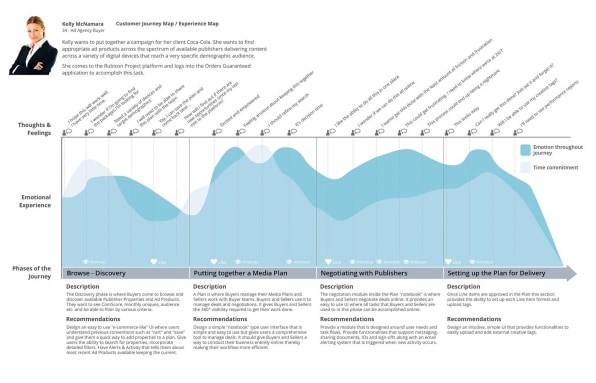The world today moves at a breakneck pace, so what worked for your brand one day might not work the next. A brand audit will give you the insights that you need to stay on top of your market demands.
hen Toyota created Scion, their brand position was to sell these cheaper and smaller vehicles to younger buyers. However, after a couple years into the brand’s lifespan, Toyota realized that their Scion vehicles were more sought after by older buyers despite the intentions of their marketing plan.
This was the perfect example for the need of a brand audit. Building a brand is difficult and will require many revisions as you learn more about your target audience. Obviously, you don’t want to needlessly spend money when it isn’t producing the results you were hoping for.
That’s just marketing 101. That’s why a brand audit will give you the opportunity to realign your branding and marketing tactics to where they’re most needed.
Overview: What is a brand audit?
Simply put, a brand audit is an in-depth look into your business’s current market position and effectiveness when juxtaposed against the competition. It is an evaluation of your efforts in the eyes of your audience for the purposes of pointing out shortcomings, inconsistencies, and gaps in your market strategy.
Should your small business perform a brand audit?
Yes. It doesn’t get any simpler than that. Even if your business is experiencing tons of success, there is always room for improvement. In fact, when you’re succeeding is a fantastic time to perform a brand analysis in order to ensure that you’re not getting comfortable while potential competitors are addressing new market demands.
If that hasn’t convinced you, here are three key benefits of performing a brand audit:
1. Discover flaws in your brand
A thorough brand audit is likely to turn up all sorts of inconsistencies and issues in market targeting that are affecting your sales, website conversions, page views, or any other metric of success you’re currently tracking.
At worst, your branding might be way off the mark, and at best, you’re only dealing with minor perception issues. Either way, a brand audit will bring these problems to your attention.
2. Pave the way for improvement
Once you understand a problem, it is much easier to contemplate a solution. Brand audits give you the opportunity to fix the issues that are dragging down the perception of your brand and provide you with honest feedback on what your target audience is looking for.
3. Provide insights for future development
Brand audits not only highlight pain points in your brand perception but also open the door for new ideas and developments in your business efforts. Perhaps the brand assessment will inspire a new product, service, or idea based on the feedback you received from your target audience.
How to perform a brand audit
Now that you understand the invaluable benefits of this process, here’s a simple five-step brand audit checklist to help walk you through the process.
Step 1: Conduct an audience survey
Starting out, this is where you’ll probably have to invest some money into auditing your brand. While some of the steps in this list require you to make some best-guess efforts to narrow your branding focus, an audience survey is the perfect way to get a direct insight into the mind of your market.
In order to net the best results, it’s best to hire an outside company to conduct market research for you.
Tips for conducting an audience survey
There is nothing more valuable in business than understanding your audience. Without these insights, you are running into the market blind and will inevitably waste tons of money and time. Here are a few tips for conducting an audience survey that’ll benefit your brand targeting efforts.
- Know your target market: Surveys are only useful if they’re conducted on your target audience. If you’re looking to sell a product to customers in the United States between the ages of 22 and 45, then it does you no good to include Australian teenagers in the data pool.
- Aim for a large sample group: Surveys are only useful when the group is large enough to eliminate the wide swinging results of potential outliers. Make sure your survey sample size is large enough to provide meaningful results.
Step 2: Audit your analytics
Google Analytics is an extremely powerful tool that you can use to understand your business website traffic once you know how to harness its full potential.
First off, your traffic analysis will give you an idea of which countries are most likely to visit your website, which sources are driving traffic to your website (Google searches, social media, etc.), and the quality of that traffic (are they converting?).
Tips for auditing your analytics
There are so many tips for using Google Analytics that I could write an entire guide on the subject. However, these are the two most important tips for getting the most out of your website marketing metrics while conducting a brand audit.
- Take your bounce rate seriously: Sometimes it’s not your product or service but actually your website itself that’s causing the problem. Your bounce rate (the metric determined by those who visit your site and leave immediately) is affected by all kinds of factors. Make sure your page load times are quick, your landing pages are relevant, and your website content is compelling in order to combat high bounce rates.
- The right market: Your website analytics will tell you where your traffic is coming from, including the geographic location of your traffic. If you’re seeing traffic spikes from countries you aren’t looking to market to, then there is obviously an issue you have to address. Traffic spikes are useless if it isn’t quality traffic from a source you hope to convert.
Step 3: Audit your social media
Not only is social media a godsend for small business marketing, it’s also treasure trove for consumer research. Performing a social media audit will give you an insight into not only your likes, shares, and referrals, but also audience insights such as age ranges and gender ratios.
This information will help you further narrow down where you should increase your efforts and where they are wasted.
If you’re interested in more information, you can read our detailed guide for auditing your social media accounts that’ll walk you through each step.
Tips for auditing your social media accounts
If this is your first time ever auditing your social media accounts, here are a few tips to help you smooth out the process.
- Use an audit spreadsheet: Conducting a social media or brand audit isn’t a one-time deal, so it’s important to maintain a record of your progress. Here’s an audit spreadsheet template that’ll help you keep track of all of your social media marketing KPIs for comparisons during each regular audit session. This data will help you build out your future social media content calendar tailored to your audience insights.
- Where to find the data: While it is possible to gather all of this information individually from each platform’s proprietary marketing analytics tools, for the sake of convenience, a social media management tool is perfect for tracking your metrics. In fact, some tools like Sprout Social or Hootsuite are capable of gathering data that Facebook or Twitter don’t usually track.
Step 4: Evaluate your competition
If your business is dealing with any direct competitors and you see them succeeding where you’re falling behind, it’s time to evaluate what they’re doing differently. The great thing about competition is that it not only incentives you to improve, but also opens the door to new ideas that you would’ve never thought of otherwise.
Tips for evaluating your competition
While you can hire a professional market intelligence expert to evaluate your competition, it’s entirely possible to learn quite a lot through some research of your own. Here are a couple tips to get you started.
- Find the comparative advantage: Evaluate how your competition markets to their audience, how they treat their customers, what services they provide, and how their website functions. Try to find what they’re better at and make improvements based on those advantages.
- Check their SEO: There are lots of analysis tools out there, like Brightedge, SEMRush, and Ahrefs, that analyze your competition for organic keywords. Use one of these tools to assess the SEO of your competitor’s website to see what keywords they are targeting and how to maximize your website content based on their actions.
Step 5: Make adjustments to your brand
Now that you understand all of the issues plaguing your brand, be it audience targeting, website function, customer service, or any combination of shortcomings, it’s time to take those lessons and make improvements.
But once you’ve made these improvements, your work isn’t over. It’s important for you to monitor these changes and take note of any fluctuations in business, web traffic, and customer response.
Tips for making adjustments
This step isn’t as simple as making the changes to your brand and forgetting them. Here are a couple tips for making the most of your efforts.
- Consider running your potential changes through focus groups: You started off this process with consumer input, and it’s best to end it the same way. A focus group is the perfect way to get feedback on your changes and make the final tweaks before implementing your brand shift.
- A/B test every change: Once you’ve made the adjustments, it’s important to A/B test all of your core metrics to see if there are any improvements to your business, website traffic, etc.
The Blueprint will help you get your branding and marketing on track
Success in business doesn’t begin and end with a comprehensive brand audit. There’s lots more you’ll have to do to ensure your marketing efforts are reaching the right audience, and we at The Blueprint want to help you supercharge your business.


























